PG&E Smart Grid Lab Tests Battery Storage


Continuing to lead the transition from fossil fuels to renewables, California in October 2013 enacted AB2514, legislation that requires the state's investor-owned utilities to acquire 1.325 gigawatts of energy storage capacity by 2020.
Earlier this month, Pacific Gas & Electric (PG&E), San Diego Gas & Electric and Southern California Edison issued their first request for proposals for energy storage assets that will help meet projected long-term local capacity requirements.
California grid and energy market regulators are joining with industry players and already taking the next step in the U.S. renewable energy-smart grid transition. They're building and testing microgrids in which solar photovoltaic systems are integrated with a variety of advanced energy storage technologies and the latest in real-time energy management software platforms.
Energy storage and renewable grid integration
Advanced energy storage is seen as the key to accelerating deployment and grid-integration of solar and renewable energy generation capacity, reducing peak power demand, and enhancing the reliability and resiliency of the electricity grid. Commenting on what has been a landmark year for U.S. energy storage, Ravi Manghani, GTM senior energy storage analyst, stated:
“2014 will be viewed as the year in which utilities started to embrace energy storage for the versatile technology that it is to solve various problems along the grid."
On Dec. 16, Eos Energy Storage announced that it had won a $2 million award from the California Energy Commission to build and demonstrate a “novel grid-scale battery system at PG&E's Smart Grid Lab in San Ramon, California.”
Eos's project came out on top following a review of 28 projects competing for a total $6.3 million in CEC grant funding. Its Aurora project proposal was the only advanced battery storage system awarded grant funding.
According to Eos, its Aurora battery system “can be manufactured at a fraction of the cost of existing energy storage solutions.” The Edison, New Jersey-based company is joining with PG&E, the Electric Power Research Institute, Lawrence Berkeley National Lab, distributed energy storage technology pioneer Stem and ETM Electromatic (ETM) to carry out the project.
“We’ve developed an energy storage solution designed specifically to meet the requirements of California’s utilities and industrial users. At a price of $160 per kilowatt-hour, we believe our batteries will compete with gas peaking plants and copper wire to provide both peak generation and infrastructure benefits,” Philippe Bouchard, Eos vice president of Business Development, was quoted in a press release. “We’re excited to work with the Energy Commission and a group of world-class partners to demonstrate the benefits of this system to the state of California.”
Advanced battery storage for a smarter grid
Eos's Aurora DC battery, ETM's power electronics and Stem's real-time data analytics will be installed and tested at PG&E's Smart Grid Lab in San Ramon. EPRI is to provide “program management and data validation services and coordinate safety, interconnection and system integration requirements.” Berkeley Lab will employ real-time grid simulation to assess “system benefits under dynamic load and renewable integration use cases,” Eos explains in its press release.
“Energy storage is likely to be a key element of the integrated grid and successful integration requires a complete understanding and characterization of the performance, controls and interactions under a wide range of system conditions and scenarios,”Mark McGranaghan, EPRI vice president of power delivery and utilization research, was quoted as saying. “This testing and demonstration project will help pave the way for much broader deployment of energy storage systems.”
For Eos, the CEC-funded utility-scale advanced energy storage system demo is an excellent opportunity to test its Aurora battery storage technology as it gears up to deliver battery systems at the megawatt-scale in 2016.
Encased in a container, Eos's initial Aurora 1000/4000 battery system can deliver 1 megawatt of electrical power for four continuous hours. That's enough electrical energy to reduce peak power demand and avoid the need to invest in transmission and distribution upgrades, the company highlights. Aurora also offers fast-response surge capability that can more efficiently and effectively balance fluctuations in the flow of electricity associated with solar, wind and other intermittent renewable energy grid assets.
“Storage cost reduction is the key to breaking this market wide open,” said Ben Kearns, Stem’s vice president of technology. “However, batteries need to be managed and software deployed to capture maximum benefits. Stem’s software platform and proven analytics will add value to a new battery chemistry like Eos's in early deployments and in fleet management when they move to full-scale production."
*Image credits: 1) Pacific Northwest Smart Grid Demonstration Project; 2), 3) Eos Energy Storage
Six Enviros Pledge to Go Public on Diversity
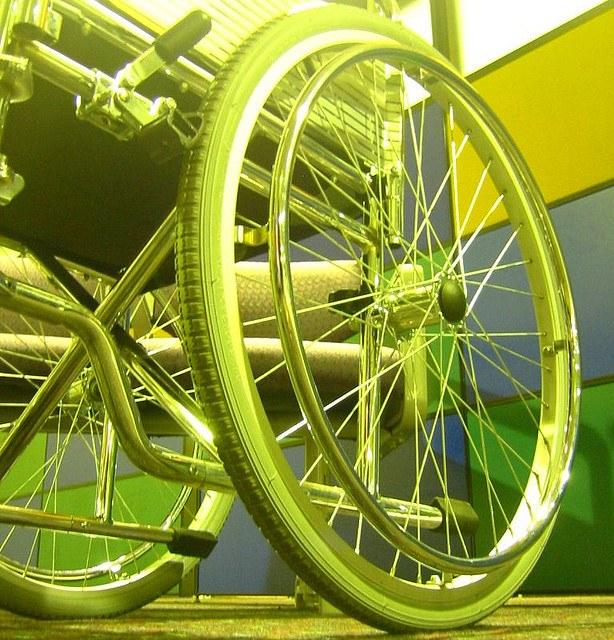

North American environmental groups have been admitting it for years: The movement needs diversity in its representation. Organizations like the Natural Resources Defense Council (NRDC), Sierra Club and others have come forward over the years to admit, often at the nudging of critics, that honoring diversity in the global environment starts with reflecting diversity in its numbers -- including its management.
The problem is: Until recently there hasn't been much of a global roadmap on how to attain that goal. Tracking diversity numbers has largely been left up to organizations with little public transparency.
But that changes next year, say six of the world's largest environmental organizations. The Sierra Club, NRDC, Audubon Society, Environmental Defense Fund, Resources Media and EarthJustice have pledged to release their diversity numbers by February 2015. The announcement was made by Green 2.0 at the Breaking the Green Ceiling forum, which it and New Media hosted on Dec. 9 in Washington D.C. Environmental groups will submit their numbers to their Guidestar profiles.
Last July Green 2.0 released its seminal report, The State of Diversity in the Mainstream Environmental Sector. The report, which was led by University of Michigan professor Dorceta Taylor, provides an insightful, if not concerning, view of the lack of diversity and multiculturalism in global environmental organizations. Some of the highlights most include:
- People of color represent only 12.4 percent of staff in nongovernmental organizations.
- Only 12.8 percent of the people hired in NGOs in the last three years have been people of color.
- When polled on whether there should be mechanisms set up to increase the numbers of minorities and low-income residents in activities and organizational boards: 74 percent of managers agreed that "it should be done." Fifty percent said they would be "likely or very likely to support"
By encouraging environmental organizations to post their diversity numbers as part of their Guidestar profiles, diversity advocates hope to prompt changes in the hiring of staff and encourage a more diverse cross-section of members to run for board positions.
NRDC's incoming President Rhea Suh, who was on hand to speak at the forum, embraced the announcement, stating that the new step would "accelerate the drive to improve diversity in our ranks, especially at senior leadership levels." Suh is the first woman of color to lead a major environmental organization. "But while greater transparency is a key driver of change, we also must significantly broaden this conversation so that Americans from all walks of life, embrace our efforts and goals as their own," added Suh.
And as Suh's statement notes, one point that was acknowledged in the report, but wasn't really addressed in the press releases and discussions about these upcoming changes, was the definition of diversity.
Taylor et al were careful to mention that "there are many other aspects of diversity such as religion, disability, etc. that are not covered in this report, and that should be the focus of future studies." It's a point that doesn't appear to have been factored into the new statistics for GuideStar.
In the 1960s, '70s and '80s, when the definition of diversity in environmentalism was eventually stretched to include white women and women's perspectives, it was no less a cataclysmic shift than what is going on today. But the true definition of such multiculturalism, by its own description, holds no boundary. I can't help but wonder why Green 2.0, New America Media and their supporters did not seize the opportunity to address the fact that diversity in its truest meaning includes many who aren't yet mentioned -- and those that should be.
Disability issues should figure largely in any discussion of diversity in the environmental movement, particularly since so much has been done -- and still must be done -- to ensure that all individuals have the same ability to appreciate and access those resources being protected. And disability here doesn't mean only those in wheelchairs or with obvious limitations, but also those individuals whose disabilities aren't apparent and may lack the same courage to step forward because of fear of rejection or dismissal.
Putting diversity on an inclusive level is the only way to erase the challenge that every generation faces in battling for its new definition. Green 2.0 and its proponents have hopefully helped to fracture the green ceiling for many, and they can do even more by extending the understanding of what true diversity, in its unencumbered form, could bring to the environmental movement.
Image: Oregon Department of Transportation
Image: StevenMitchell
Rocky Mountain Institute and Carbon War Room Merge
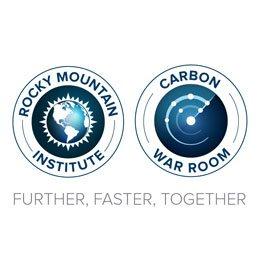

Rocky Mountain Institute and Carbon War Room have joined forces
Tropical Countries Vow to Fight Deforestation at Lima Climate Conference
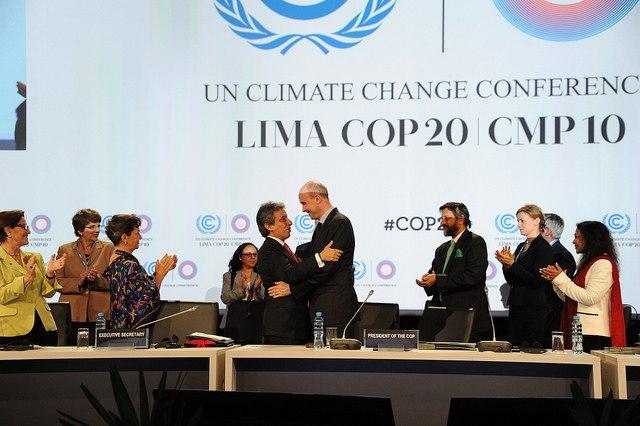

By Jeff Hayward
I recently returned to the U.S. from Lima, where I was part of a delegation to COP20 from the NGO Rainforest Alliance. Coverage of it ranges from cheers and applause to anger and frustration, but my own experience is somewhere in between.
There is reason to criticize what the Lima agreement didn’t say. It called for countries to submit their action pledges in advance of COP21 in Paris next year, but didn’t specify what those pledges needed to include or how they’ll be reviewed. But it was progress that, for the first time, all nations agreed to take responsibility for their greenhouse gas emissions. For all the delay and brinksmanship of the negotiations, COP20 was also an affirmation that all nations, developed and developing alike, have important contributions to make.
Last week in Lima, pledges to the Global Climate Fund topped $10 billion, with new contributions not only from wealthy nations like Belgium and Australia, but also from developing forest nations like Peru and Colombia.
It’s remarkable that Latin American nations whose people depend mostly on resource-based livelihoods like forestry, ranching and farming are starting to contribute to the GCF. It points to tropical countries’ role as full partners, not so much as funders -- there’s no question that most funding must come from developed nations – but as the actors with the most to contribute to emissions reductions from agriculture, forestry and other land use (known by the acronym “AFOLU”).
AFOLU is the second-biggest emitter of greenhouse gases, accounting for a quarter of global GHG emissions. Plowing, fertilizing, grazing and burning generate vast amounts of GHG, and agriculture drives deforestation which generates even more, especially for carbon-rich tropical forests. The U.N. Climate Summit in September called for eliminating deforestation by 2030. That would be like taking all the world’s cars off the road or eliminating all U.S. emissions. Yet as population and food demand rise, pressures on farmers and forests are growing. That’s why agriculture and forestry were prominent in Lima, and why national, bilateral and multilateral initiatives announced in these areas are hopeful outcomes of the meeting.
The Global Landscapes Forum at COP20 attracted thousands of policy and business leaders in to discuss frameworks and financing for sustainable agriculture and forestry. “We know that climate change cannot be tackled without a fundamental change in the way that agriculture is practiced,” Unilever CEO Paul Polman told the Forum.
Unilever was an early adopter of that view, committing to source all agricultural raw materials sustainably by 2020 and eliminate deforestation from its supply chain. But COP20 showcased a growing trend of tropical countries taking their own initiatives to cut emissions from land use.
For example, 13 tropical countries announced the Lima Challenge, pledging to go further in their efforts to stop deforestation, while challenging other producer countries to follow suit and for donor countries to support them.
Seven Latin American and Caribbean countries launched Initiative20x20 to restore 20 million hectares of degraded land to a combination forest, agroforestry and plantation by 2020, and that’s just the beginning, say the organizers. To get an idea how far-reaching this could be, see this report which finds that restoring just 12 percent of the world’s degraded land to productive use could feed 200 million people while cutting GHGs.
The Peruvian government presented its iNAMAzonia program (NAMA stands for “Nationally Appropriate Mitigation Actions”), for which my organization the Rainforest Alliance is providing technical support. A significant part of the Peruvian Amazon is degraded land where farmers have carved out coffee, cacao, oil palm and livestock production. By working with them to make their operations more sustainable and productive, iNAMAzonia relieve pressure on the surrounding forests and prevent future deforestation.
I’m not implying that responsibility for acting on climate change somehow lies with tropical countries, which are generally the ones least responsible for the causes and suffer most with the effects. Developed countries must lead on cutting their own emissions and on financing initiatives like the ones above.
What I am saying is that cutting emissions from land use by ending deforestation and transforming agriculture are essential to climate solutions, and that the initiative of tropical countries showcased at Lima is a sign that we’re actively building the mechanisms to accomplish it. As Leandro Salina, a coffee farmer in Mexico’s Oaxaca region working with Rainforest Alliance to implement climate-friendly farming practices, says in this video, “Even though we know we aren’t causing [climate change] – it’s others who are causing it – we, too must do something.” Such attitudes are noble, but more than that, they’re of great practical significance for global emissions, and a source of hope for the climate.
Image credit: Flickr/UNclimatchange
Jeff Hayward is the director of the Rainforest Alliance's climate program.
What Role Will Mushrooms Play in a Sustainable Future?


As we move forward to a more sustainable and flourishing future, we’re going to need to increase our understanding of our role in the biosphere and request the assistance of some of our fellow planetary occupants, many of whom can do things that we can’t.
One of these we’ll likely need are mushrooms. Of course they are delicious on pizza and in soup, but they also have some amazing properties that make them essential for the maintenance of the soil, on which we all depend. Not only are they one of nature’s best recyclers, breaking down waste matter into simpler compounds that feed the soil, but they can also break down toxins and render them harmless.
From this comes the idea of mycoremediation. That’s the practice of using mushrooms to clean up contaminated soil. White-rot fungi dissolve the fibers of wood by secreting enzymes that break the fibers down. A similar mechanism can be used to break down complex hydrocarbons such as polycyclic aromatic hydrocarbons (PAH). In fact, these mushrooms can be used effectively against a whole array of infamous toxins including dioxins, PCBs, pesticides, coal tar and crude oil. Generally, the fungi are introduced into a contaminated area in conjunction with substrates such as straw, wood chips, bark or other organic material to help them grow.
The concept has been demonstrated at relatively large scale. For example, in 2007, there was an oil spill of some 58,000 gallons of crude off the coast of California. Large mats of woven human hair were used to collect the oil, which were then removed from the water and treated with oyster mushrooms and straw. Within a few weeks the mats were broken down into soil that was clean enough to be used for roadside landscaping. Other examples and discussion of mycoremediation can be found here.
Now, a team of micro-biologists and designers at Livin Studio in Vienna got together and added a new twist that combines both of these amazing mushroom properties. The fungi mutarium is an artificial environment in which edible mushrooms are used to break down plastic, creating a product that is not only safe but edible. This truly takes the cradle-to-cradle precept of “waste equals food” about as far as you can go.
The process works like this: First bits of thin plastic, like the polyethylene bags that stores like to give out, are chopped up and then exposed to UV light to kill germs. Then they are placed in little pods made of agar, an edible culture medium often used in laboratories to grow bacteria and other microorganisms. It is also sometimes used as a vegetarian substitute for gelatin.
Then, liquefied fungi sprouts derived from two popular mushrooms, oyster and split gill, are added and left in an incubator-like environment that is conducive to fungal growth. After several weeks the plastic is completely decomposed, leaving nothing but edible growth.
I know that after reading this you are going to want to rush out and buy your own mutarium, so that you can begin eating those plastic bags that have been cluttering up your house, but I’m afraid you’re going to have to wait for a while. The whole concept is still in the research phase. For one thing, it still takes too long for the process to complete. The team will continue to investigate ways to speed things up.
This does not really sound all that useful, though it certainly would be handy if you found yourself stranded in the middle of the Pacific garbage patch. If nothing else, it’s certainly food for thought.
Image courtesy of Livin, Studio Photography by Paris Tsitsos 2014
RP Siegel, PE, is an author, inventor and consultant. He has written for numerous publications ranging from Huffington Post to Mechanical Engineering. He and Roger Saillant co-wrote the successful eco-thriller Vapor Trails. RP, who is a regular contributor to Triple Pundit and Justmeans, sees it as his mission to help articulate and clarify the problems and challenges confronting our planet at this time, as well as the steadily emerging list of proposed solutions. His uniquely combined engineering and humanities background help to bring both global perspective and analytical detail to bear on the questions at hand.
Follow RP Siegel on Twitter.
International Law Silent on Climate Change Responsibility
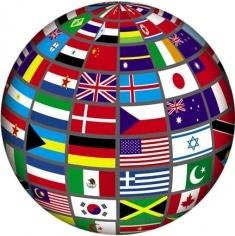

As global climate change increasingly affects everything from public health and species extinction to infrastructure and property destruction to migration patterns, well, who do you sue?
No one apparently. If you think the international response on what to do about climate change is pretty much a fragmented, inadequate mess, then international law on the subject is even messier. And weaker.
A recent article in the Guardian notes that international law “stays silent on the responsibility for climate change.” This might be important because if there were serious legal ramifications regarding climate change, faster action to mitigate its effects might occur. Or not.
“The global economy is underpinned by law, but you would think it had nothing to do with climate change,” the article by Stephen Humphreys says. “Climate-related cases have been absent from international courts – even from disputes involving human rights, investment or the environment. While there have been cases heard in some national courts, particularly in the U.S., they do not progress far.”
This weak legal response means that “big polluters are getting off lightly.”
The article continues: “It is clear that 60 percent of proven oil reserves must be left in the ground if we are to have even a remote chance of limiting global warming to two degrees. Yet oil companies and exporters continue to drill and explore, to enjoy their assets and hedge against future losses, as though climate change were a mere financial risk rather than an existential threat to peoples’ lives and livelihoods.
“The world of international law is behaving as though the problem of climate change does not exist."
Look at one aspect: international trade law. An obvious policy for a country that’s serious about dealing with climate change would be to impose low carbon standards on the production of various everyday goods such as meat, mobile phones and plastics. “Does international trade law allow states to impose low-carbon standards on imported goods? The answer is yes and no,” Humphreys writes. “A low or zero-carbon import policy is almost certain to violate World Trade Organization (WTO) law. There may be viable policies but they will be time consuming and expensive to design, and there is no guarantee the WTO’s principal court won’t slap down any such policy on a technicality. No country has yet tried.
Why has the WTO not taken more proactive steps to tackle climate change? And why has the estimated $600 billion (£382 billion) in annual subsidies to fossil fuels never been challenged, while paltry subsidies to support renewable energy technologies have been stopped?”
These are unanswerable questions; and the questions become just as complex with respect to other international regimes, such as investment law and human rights law.
A 2008 paper, "Global Climate Change and the Fragmentation of International Law," addressed this issue in academic terms, highlighting the challenges for international lawyers and policymakers “in navigating the relationship between the climate regime and the biodiversity regime, and the relationship between the climate regime and the multilateral trading system.” The authors concluded that a “narrow focus on conflicts misrepresents the multifaceted nature of climate change and precludes an adequate jurisprudential understanding of the relationship between the climate regime and other regimes.” They call for “improved understanding” and a “broadening of the debate.”
Seven years later, the needle has barely moved on this subject, but there is some realization that it might be wise for international agreements to recognize national laws. Countries around the world are taking actions domestically to help cope with climate change. Columbia Law School’s Sabin Center for Climate Change Law has collected the relevant laws and policies of various countries into a database.
It’s probably too much to ask that an international agreement on climate change should include legally-binding enforcement mechanisms with teeth. Check that, it’s too impossible.
Image credit: From the Sabin Center for Climate Change Law website.
5 Ways to Improve your Climate Risk Reporting
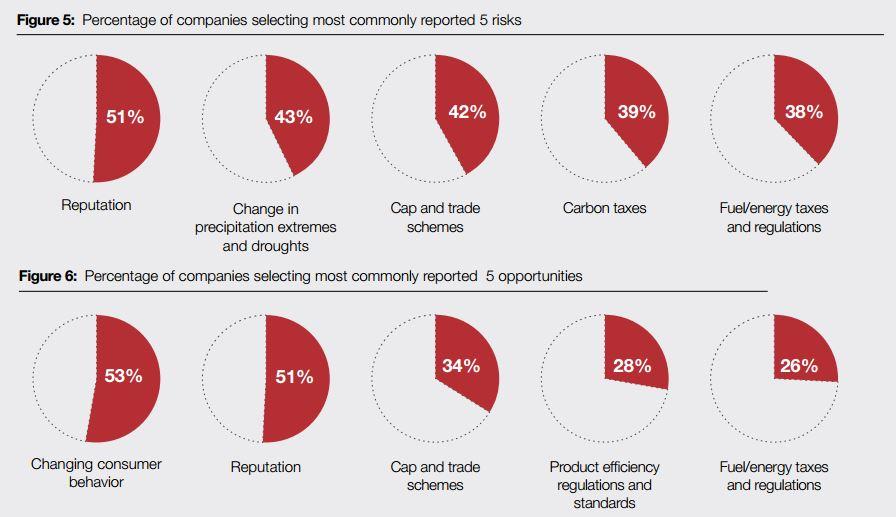

More companies report climate risks, but few do it well
According to Ceres, just shy of 60 percent of S&P 500 companies report climate risks in their financial disclosures (10-K), but the quality of disclosures is going down over time. “Most S&P 500 climate disclosures in 10-Ks are very brief, provide little discussion of material issues, and do not quantify impacts or risks,” writes Ceres in Cool Response: the SEC & Corporate Climate Change Reporting. Companies typically include no more than “one short paragraph or a couple of lines focused on climate-related risks or opportunities.”
Uncertainty or complacency?
Why are companies so shy in disclosing climate risks? Part of the answer is that the uncertainty around climate change hazards -- their magnitude, timeliness or location – make it difficult for companies to assess whether the risks qualify as “material." More often than not, however, the timid reporting has more to do with the lack of a systematic risk analysis, backed by an established methodology and solid benchmarks. Politics and concerns over liability also play a role in a hushed reporting tone, whereby companies may think they are better off avoiding the topic altogether rather than providing partial and potentially inaccurate information.
Thinking beyond carbon regulatory risk
The quality of climate risk disclosure is often much higher in CDP reports, which effectively prods for detailed answers. In its 2013 Global 500 Climate Change 2013 report, CDP points to “a seismic shift in corporate awareness of the need to assess physical risk from climate change and to build resilience.”
Yet, the same report highlights a common shortfall among reporters: “Companies tend to focus on tangible risks in areas such as carbon taxes or energy prices, whereas the benefits from climate related opportunities are often less tangible, such as changing consumer behavior. (…) This suggests that businesses may be missing some significant risks and opportunities because valuation methods are unavailable.”
Five ways to improve your climate risk reporting
Accurately identifying risks and opportunities and developing a strategic adaptation plan are crucial to a company’s long term’s profitability. How can you better identify climate risks and opportunities, reduce your vulnerability, and improve your reporting score?
- Focus on the big-ticket items: for an initial risk screening, you’re better off focusing you your assets and facilities with the highest embedded value. While imperfect, this will help you identify low-hanging fruits and gain support from your management for a more comprehensive analysis.
- Be timely: climate change is not all about floods, drought or hurricane. When looking at assets with a long life span, you should consider gradual changes in temperature and precipitation, which could drive utility costs up, as well as sea-level rise and the increased likelihood of storm surge.
- Think global: an effective analysis will identify and benchmark risks and opportunities across your entire value chain, not just your own operations: examine your suppliers and your extended supply chain network, your distributors and your customers. The main source of risk could be in your market or in one of the raw materials you depend on.
- Act local: your adaptation response needs to be crafted individually for each location. You may need to consider traditional risk management tools, such as insurance, along with non-traditional methods geared specifically to the local circumstances of your facility, supplier or distributor.
- Be a team player: climate change is not a problem that can be solved alone. A robust adaptation strategy will require meaningful engagement with local stakeholders and partnerships with public agencies.
What are the challenges and successes you’ve had assessing climate risks for your company? Share your experience!
Image credits: 1) Ceres 2014 2) http://www.rootsemporium.co.uk/ 3) CDP 2013
Emilie Mazzacurati is the founder and CEO of Four Twenty Seven. Four Twenty Seven provides customized climate risk analysis and adaptation strategic planning to corporations and public institutions. Four Twenty Seven's climate risk Forecasting and Adaptation Strategic Tool (FAST) provides a rapid and effective way to screen your value chain and reduce vulnerability to climate change risk.
Dow Promotes the Importance of Handwashing
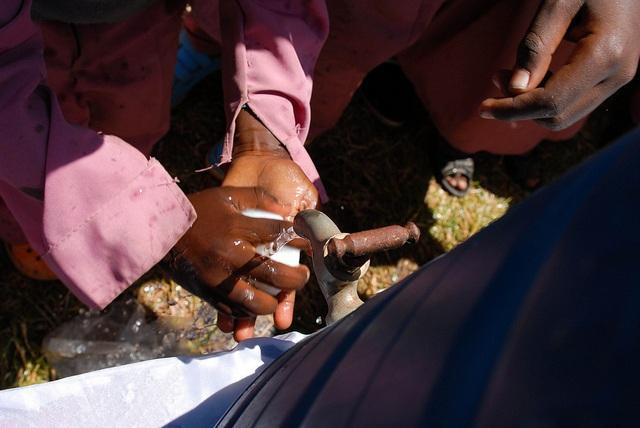

Dow Chemical Co. clearly knows that handwashing is an important thing for children to do. The company recently announced its affiliation with the Global Public-Private Partnership for Handwashing with Soap (PPPHW) to promote the practice that can prevent diseases.
This is not the first time the company has partnered with PPPHW. Dow previously worked with the organization during Global Handwashing Day, a campaign that raised awareness about the importance of handwashing with soap and water. PPPHW started Global Handwashing Day to reduce child mortality rates related to respiratory and diarrheal diseases.
Global Handwashing Day recognized a technology created by Dow that makes soaps last longer while feeling better on the skin called Dow Polyox Water-Soluble Polymers. The technology is used in Unilever’s Lifebuoy soap. In 2011, Unilever asked Dow to help a new formulation for its Lifebuoy soap brand. The two companies came up with a soap that people in developing countries could afford and would last longer than other soaps.
Dow’s partnerships with PPPHW and Unilever help the company meet its sustainability goals for 2015. One of those goals is achieving at least three breakthroughs by 2015 that will help solve world challenges in certain areas, including health.
“We believe in the power of the human element to change the world. Dow places a high value on listening to our communities and we strive not just to be a good neighbor, but an excellent global corporate citizen,” said Ralf Brinkmann, business president, Dow Consumer Care. “This initiative has the power to change and save lives, and we are proud to contribute to building better, stronger, and more sustainable communities in the places where we do business.”
Handwashing saves the lives of children
Every year, 760,000 children under five die due to diarrheal diseases, according to the World Health Organization (WHO). Diarrheal disease is the second leading cause of death in children. Over 80 percent of those deaths occur in in sub-Saharan Africa and South Asia. Many children can be saved through proper hygiene. Handwashing in West and Central Africa has been found to reduce the rate of diarrheal disease by 48 to 59 percent, a report by Dow on its partnership with Unilever states.
The Dow report shows just how important handwashing is to the future of children. Handwashing with soap at certain critical times such as prior to meals or preparing food and after using the toilet can reduce the risk of diarrhea by 45 percent. Handwashing with soap can reduce the incidence of acute respiratory infections (ARIs), including pneumonia, by 23 percent. Handwashing not only helps children, but their mothers as well. Handwashing with soap by mothers and birth attendants was shown to reduce neonatal mortality in Nepal by 40 to 45 percent.
Image credit: UNICEF Ethiopia
Salvation Army enlists Mitie in employability programme


A joint employability intitiative between Mitie and The Salvation Army has been so successful it has been nominated for an ERSA Employability award.
The Employment Related Services Association (ERSA) is the representative body for the employment support sector – sometimes called welfare to work.
The Salvation Army approached Mitie, the FTSE 250 strategic outsourcer, to help place a number of individuals, who all had specific barriers to employment but were willing to take on the training needed for the role, into work in the Essex area.
Rob Cattell, md of Mitie's Environmental+ business commented: “This is a brilliant example of how collaboration between local charities and businesses can make a real difference to local people. Mitie is committed to providing support to the long-term unemployed and this is proof that our approach works.”
Julie Bakonyvari, who is The Salvation Army's employment engagement co-ordinator for Southend commented: “Each year, The Salvation Army helps thousands of people back into employment, enabling them to achieve their full potential and transform their lives.
"Our tailored support means we can help people meet their goals and aspirations, while identifying barriers preventing them from achieving these. We have been fortunate to forge links with Mitie, who have provided valuable additional assistance to those we are supporting back into employment - we look forward to continuing this working relationship.”
Stories and Beer: Creativity and Sustainability


We hosted another monthly "Stories and Beer Fireside Chat" on Wednesday, Dec. 17 at 6:30 p.m. PST at the Impact HUB San Francisco – and online via web cam.
How can creativity and design thinking solve problems of sustainability?
It might seem obvious that creativity is part of any problem-solving process, but it’s not always obvious how to create the conditions wherein creativity can thrive. How can these conditions be stoked? More importantly, how can sustainability be injected into the creative process so that any problem solving design is thinking about the long-term sustainability challenges of our world and society?
On Dec. 17, TriplePundit's founder, Nick Aster, engaged in conversation with Joe Speicher, executive director of the Autodesk Foundation. They took an up-close look at the connection between creativity and sustainability. After the dialogue, the floor opened up for audience questions and participation.
Schedule
- 6:30 – 7:00 – beers and networking
- 7:00 – 8:00 – fireside chat and Q&A
- 8:00 – 8:30 – networking
Joe Speicher is the Executive Director of the Autodesk Foundation. Prior to joining Autodesk, Speicher was on the founding team of Living Goods, where he spent six years leading operations for the global health organization.
He began his career in the banking and finance sector, working with Deutsche Bank and Cambridge Associates. He then spent three years in the Peace Corps in the Philippines and has worked as a consultant for the Economist Intelligence Unit, the World Bank and Google.org. He earned a Masters degree from Columbia University and holds a Bachelors degree from Washington and Lee University.